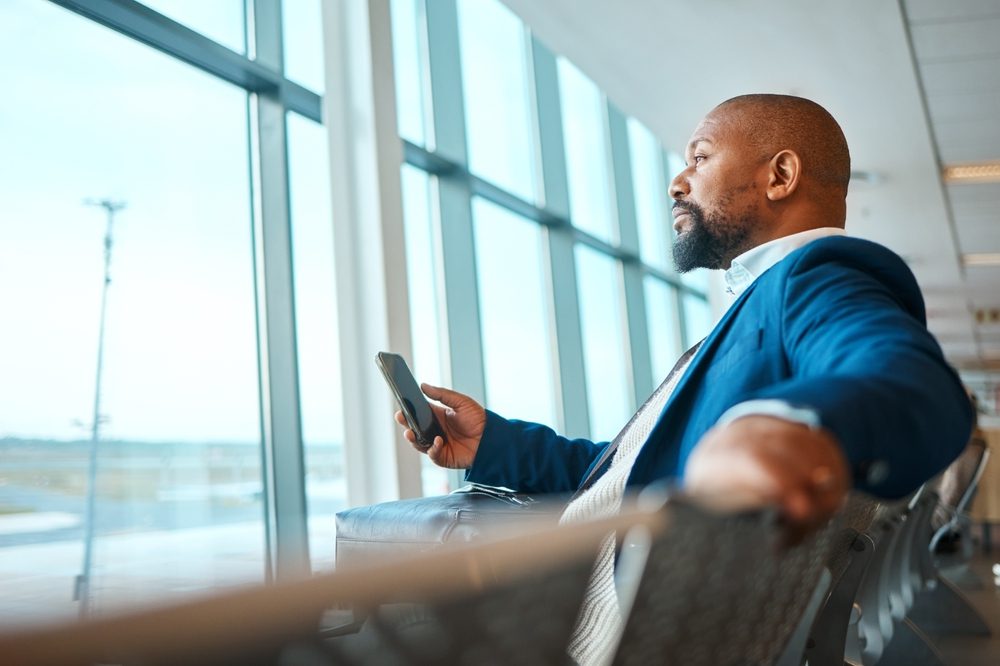Those who have traveled previously know that an announcement will be made to passengers requesting that they switch off or place their cell phones in airplane mode well before takeoff. Why?
Your phone automatically locates the nearest cell tower whenever you make or receive a call. So, your calls may cause problems for ground-based cell towers and even for an airplane’s electronics. If, for example, a hundred people were all using their phones to try to make a call, this kind of radio interference might become a major issue.
So what would happen if you kept your phone’s cellular functions on 30,000 feet?

Connected Traveler at the AirportImage source: PeopleImages.com – Yuri A/Shutterstock.com
Most likely, it’s all for nothing. Even though pilots who have seen broken gauges have looked suspiciously at phone signals, no accidents have ever been linked to them. Despite the small threat, airlines and the FAA would rather err on the side of caution.
The potential for interference from a mobile phone exists not just while the phone is being used but even when it is not. That’s why flight attendants insist everyone put their phones into airplane mode right away, even if they won’t be used.
Turning on Airplane Mode on a smartphone or tablet with mobile data off will prevent calls and text messages from being received or sent, but will not affect the devices’ ability to be used for other purposes, such as playing music, reading, or playing games.
Now more widespread than ever, in-flight Wi-Fi makes it possible to check email and surf the web throughout your trip.
A matter of etiquette

Serene Traveler on a FlightImage source: Kitreel/Shutterstock.com
The use of a wireless connection for a phone conversation is not only feasible but also completely normal. Since 2008, it has been possible to make a call from an altitude of 3,500 feet. But no one likes to be seated next to a chatty phone user. alternatively, to fly with a planeload of chatty passengers. Think about how annoying the noise would be.



